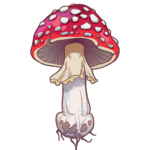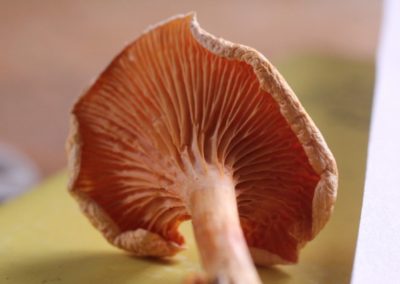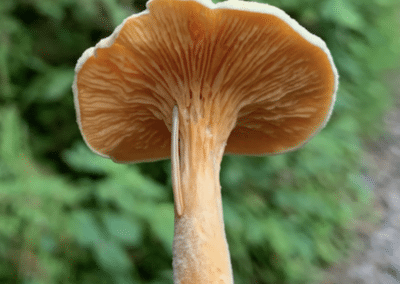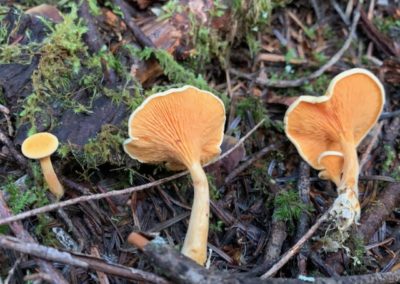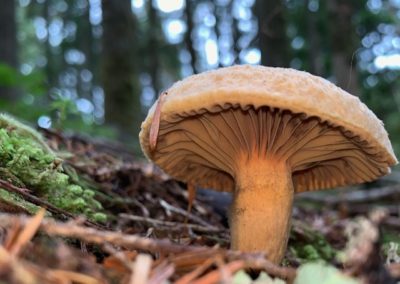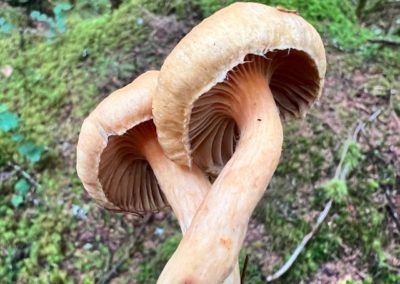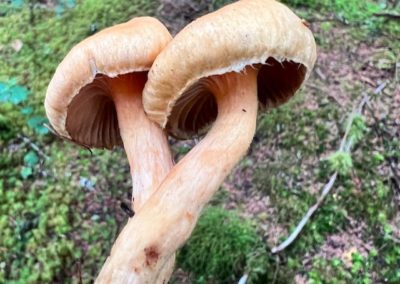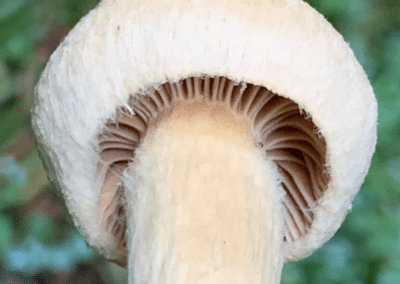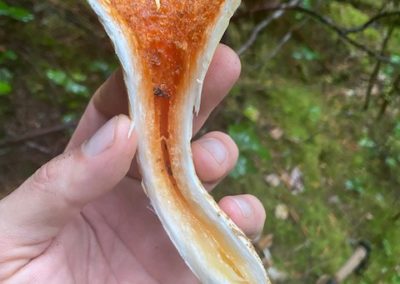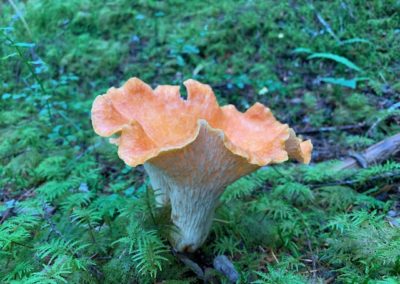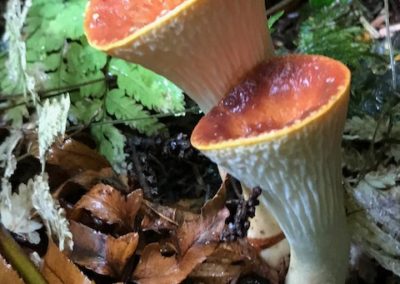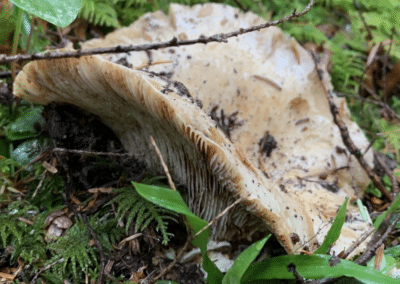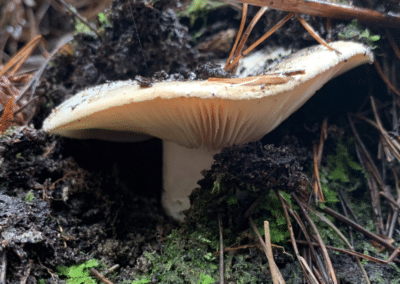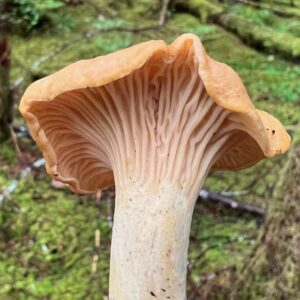Hygrophorpsis aurantiaca
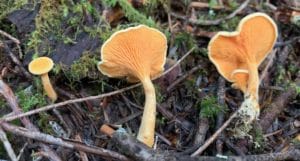
From above Hygrophoropsis aurantiaca looks identical to many chanterelles. Looking at the gills and the stem quickly give away the true identity of this mushroom.
Notice the gills on this mushroom are thin like most other traditionally gilled mushrooms. The gills of this mushroom are forking, or bifurcated, which can appear to be veiny like the chanterelle. It is possible to check the gills for chanterelle or not-chanterelle without picking the mushroom by simply brushing the underside of the cap with your finger. Over time you can learn to recognize chanterelle or Hygrophoropsis by touch.
Another useful distinction for this mushroom is in the stem. Hygrophoropsis stems are typically hollow, thin, and flimsy compared to most chanterelles.
Finally, the Hygrophoropsis can be found growing on rotten wood. That wood can be buried so it will appear to be growing from soil like a true chanterelle. With some exceptions, true chanterelles do not grow on wood.
Chroogomphus tomentosus
The most useful characteristics to notice with the Chroogomphus tomentosus is the slightly furry or fibrillose texture on the cap. When young you will see these fine fibrils extending from the cap to the stem. True chanterelles have a smooth cap without scales or fibrils.
The Chroogomphus also has the thin, blade-like gills typical of most gilled mushrooms. This differs from chanterelles which have shallow, blunt or rounded, and often veiny gills
Turbinellus floccosus
The first time I found this mushroom I thought it was a chanterelle. That was because I had never found a true chanterelle at that point. Once you have held a true chanterelle it should be much easier to avoid confusing the two.
The two characteristics that clearly differentiate the ‘scaly chanterelle’ from a true chanterelle are the scaly cap, and the vase-like shape of the mushroom. Remember that true chanterelles have a smooth cap texture and the stem is not hollow as you often find in vase-shaped turbinellus mushrooms.
Russula brevipes
This Russula can confuse people due to the prominent gills that can appear to run down the stem. Chanterelles do not have blade-like gills like the Russula. When attempting to peel the mushroom apart, one would find that the tissue is quite brittle rather than the string-cheese texture of a true chanterelle.
Guepinia helvelloides
Apricot Jelly Fungus
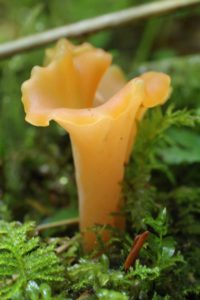
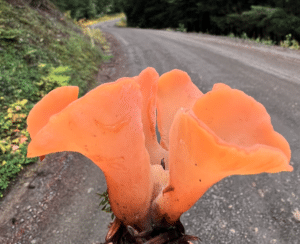
Shape and color are the only two chanterelle-like qualities to this delicate mushroom. It is missing the rounded ridges of a true chanterelle, the jelly-like tissue is quite different from chanterelles, and the fluted shape differs as well.
Omphalotus sp
Jack-O’-Lantern
Jack-O’-Lantern mushrooms are quite uncommon throughout our range however due to their often bright-orange coloration, and decurrent gills, this mushroom is often misidentified as a chanterelle.
This is a poisonous mushroom so misidentification is more serious than many other chanterelle look-a-likes. The easiest way to differentiate this from a chanterelle is by the gills. This mushroom has paper thin, blade-like gills. Chanterelles have rounded, veiny ridges.
